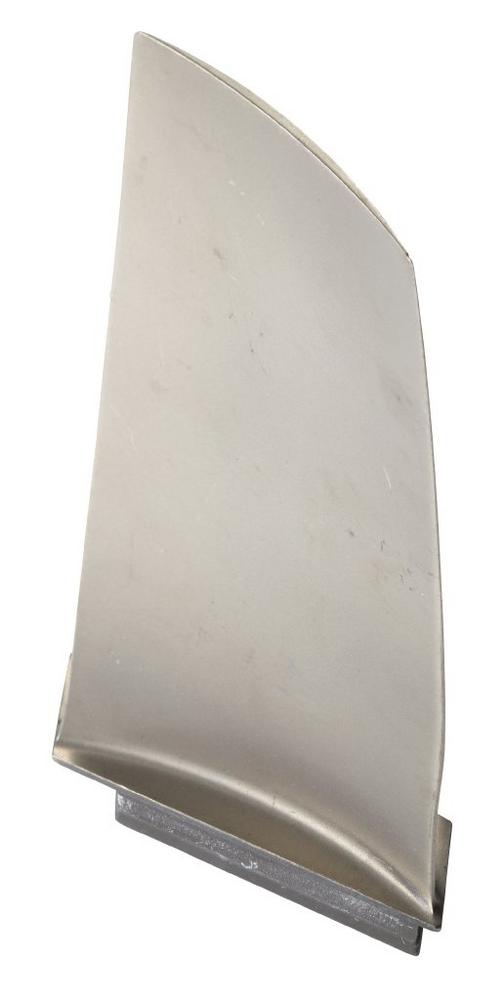The engine blades used in the aerospace industry are usually made of materials that are difficult to machine and have a low tolerance that must be met to obtain the ideal air flow and maximum wear resistance. These components are exposed to extreme temperatures of up to 1,000°C. This means that the blade surfaces also have to be of the highest quality and optimally adapted to the conditions in the engine. OTEC has developed a special process to improve the efficiency and safety of engine blades and produce fewer defects.
Smoothing the air foil, i.e. the blade body, has a positive impact; depending on the required result, the surface can be smoothed to values of up to Ra < 0.2 µm in a few minutes, increasing blade efficiency. The material is removed evenly and only a minute amount is taken from the surface. Repairing the leading and trailing edges with precision rounding can reduce the quantity of rejected parts. The upstream machining process, e.g. blasting, can damage these edges. OTEC’s method enables them to be rounded to a given radius and hence repaired. The rounding process is very precise and involves minimal material removal.
Deburring the root helps to improve safety by preventing the blade from becoming caught in the disc. Surface treatment not only prolongs the service life of the blades but increases their efficiency. This is also the ideal preparation for coating the components. Smoothing and rounding the engine blades is possible in a single operation thanks to OTEC’s innovative stream finishing process.
In the stream finishing process, the blades are clamped into the machine and lowered into a container of abrasive. Processing is carried out by both the rotation of the container and the movement of the workpiece in the media flow. The flow to the blades in the machine is clocked, i.e. the alignment angle of the workpiece changes at frequent intervals. This means processing can be precisely aligned to specific points on the workpiece, achieving a smooth surface and precise rounding without altering the shape of the blade. An important benefit of OTEC’s process is the ultrashort machining times compared to conventional processes. Depending on the size and initial condition of the workpiece, the surface treatment of engine blades takes between 2 and 20 minutes. As the blades are clamped individually, no damage will occur to the workpiece surface. All processing steps can be carried out in one machine. The SF-5 stream finishing system can process up to five engine blades at once, ensuring high output and cost efficiency. Tests conducted after OTEC processing show positive results for residual stress, fatigue strength and fluorescence control.
Engine blades are not only used in the aerospace industry, but also in the power sector. The surface treatment of blades from energy turbines can also be carried out in OTEC machines.
OTEC Präzisionsfinish GmbH offers precise technology for perfect surface finish. OTEC machines for deburring, grinding, smoothing and polishing guarantee an efficient and perfect surface finish of tools and products. Operating a worldwide distribution network, OTEC is represented locally for international customers from various industries. Thousands of customers benefit from the extensive know-how of the technology leader OTEC in the development of a perfected interplay of machine and process media.
OTEC Präzisionsfinish GmbH
Heinrich-Hertz-Straße 24
75334 Straubenhardt
Telefon: +49 (7082) 4911-20
Telefax: +49 (7082) 4911-29
http://www.otec.de
Marketing
Telefon: +49 (7082) 4911670
Fax: +49 (7082) 4911142
E-Mail: v.wasner@otec.de
![]()
